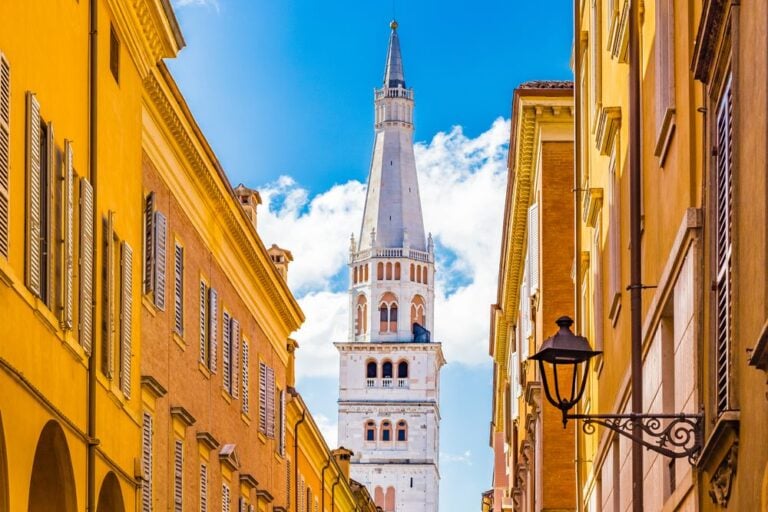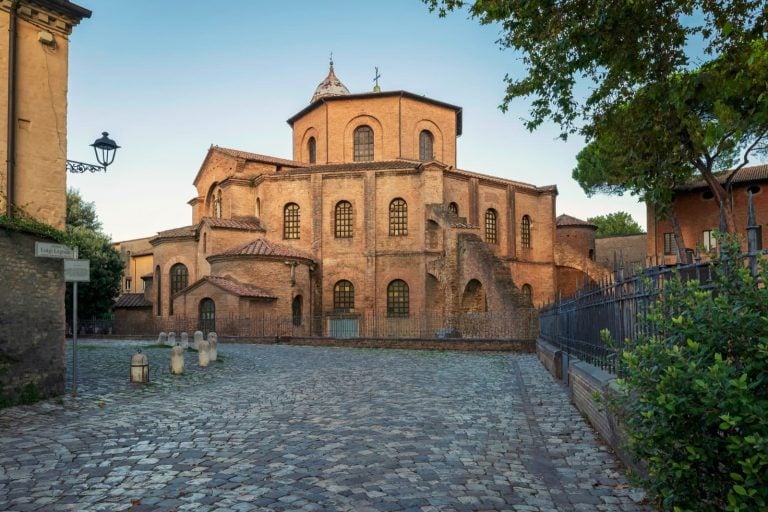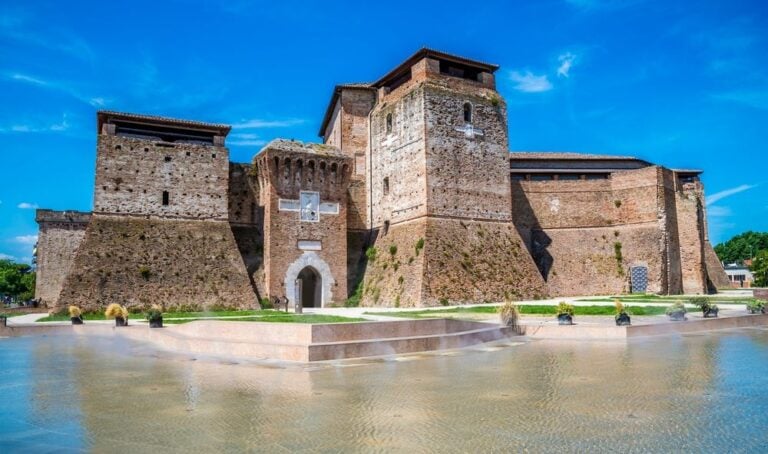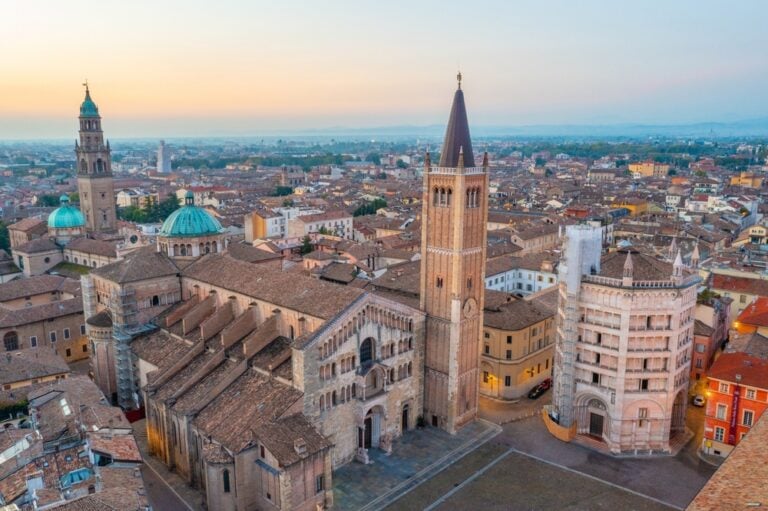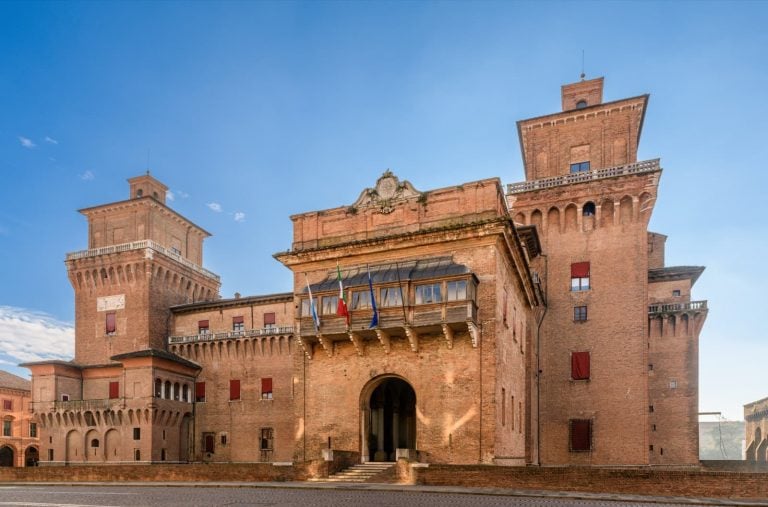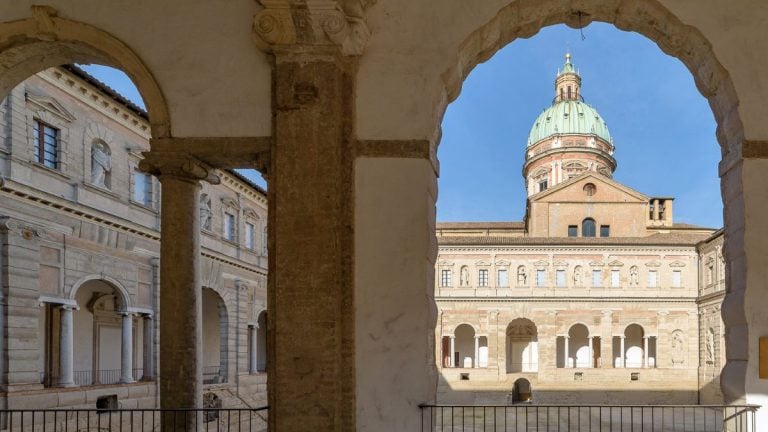In Bologna, as in all cities, there are famous places, mentioned in all guidebooks, that tourists never fail to visit. The Two Towers, Piazza Maggiore, the Archiginnasio – to name but a few – are on the radar of every traveller arriving in the city for the first time, topped off with an unfailing plate of tortellini, tagliatelle and other typical Bolognese specialities.
On the other hand, this tour is designed for those who already know the city or wish to explore it in an alternative way. That’s why among the 10 stops you will not find the Finestrella in Via Piella or the Quadrilatero Market, but rather less frequented places which reveal a slightly different Bologna from the mainstream narrative.
If you want to follow us, we invite you to take it slow and bring with you a good dose of curiosity. What you’ll find here is an itinerary featuring little-known ancient and contemporary works of art, unconventional museums, underground cinemas and hidden gardens.
1. MAMbo - Museo d'Arte Moderna di Bologna
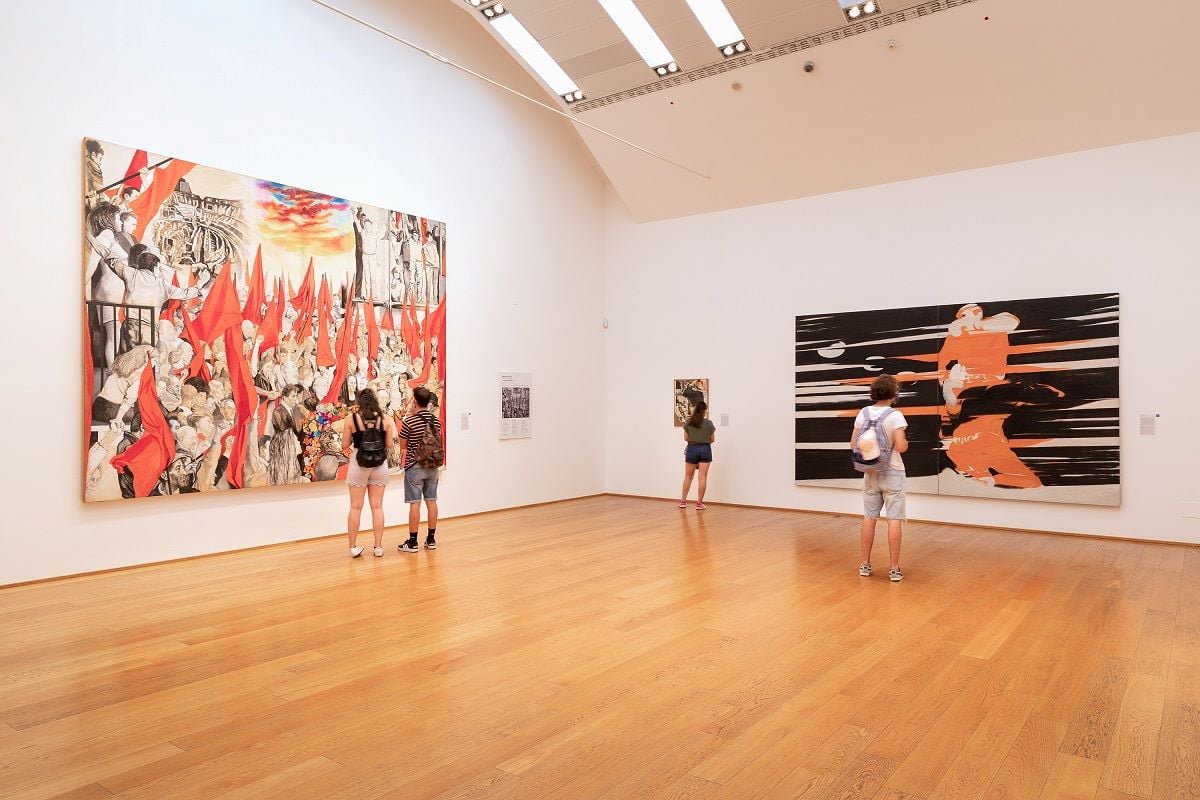
The first stop is very convenient for those arriving in Bologna by train, but is also easily reached from the centre. The Museum of Modern Art in Bologna, MAMbo for short, is an essential stop to discover the artistic side of the city, especially during a period of great artistic and cultural buzz such as the 1960s and 1970s.
The museum houses works of contemporary art from the post-World War II to the present day, an area for temporary exhibitions and also the Morandi Museum, dedicated to the well-known Bolognese painter.
The permanent collection provides an insight into various art movements of the recent past such as Arte Povera, Roman painting of the 1960s and the performing arts in Emilia Romagna. For example, the exhibition includes extensive documentation of the famous performance by Marina Abramović and Ulay “Imponderabilia”, which took place in Bologna in 1977. Among the best known works hosted at MAMbo, we cannot fail to mention ‘I Funerali di Togliatti’ by Renato Guttuso and ‘Non parto, non resto’ by Alighiero Boetti.
Once outside the museum, we recommend a walk in the adjacent Giardino del Cavaticcio, accessible from Via Azzo Gardino, which was created on the ancient river port of Bologna. Besides hosting festivals and summer events, the garden is dotted with contemporary sculptures by artists such as Paladino, Pomodoro and Maraniello.
2. Piazzetta Pier Paolo Pasolini

For our next stop, let us stay within the district known as the “Manifattura delle Arti”, an area that was populated by manufacturing and commercial activities until World War II and has now been transformed into an important cultural centre of the city.
The MAMbo, for example, was created inside an old bread oven, operating until 1936, while the Cineteca di Bologna is divided between two locations. One was created from the restoration of the Manifattura Tabacchi, while the other is partly housed in the former Macello (slaughterhouse) overlooking Piazzetta Pier Paolo Pasolini. This is a place with a quiet and relaxed atmosphere, filled with references to the world of cinema, where you can watch a film in the Lumière Cinema, have a drink at the bar (open in the summer only) and take a tour of the Mercato Ritrovato, a farmers’ market offering local products and dishes to be tasted directly in the piazzetta.
3. Opificio delle Acque
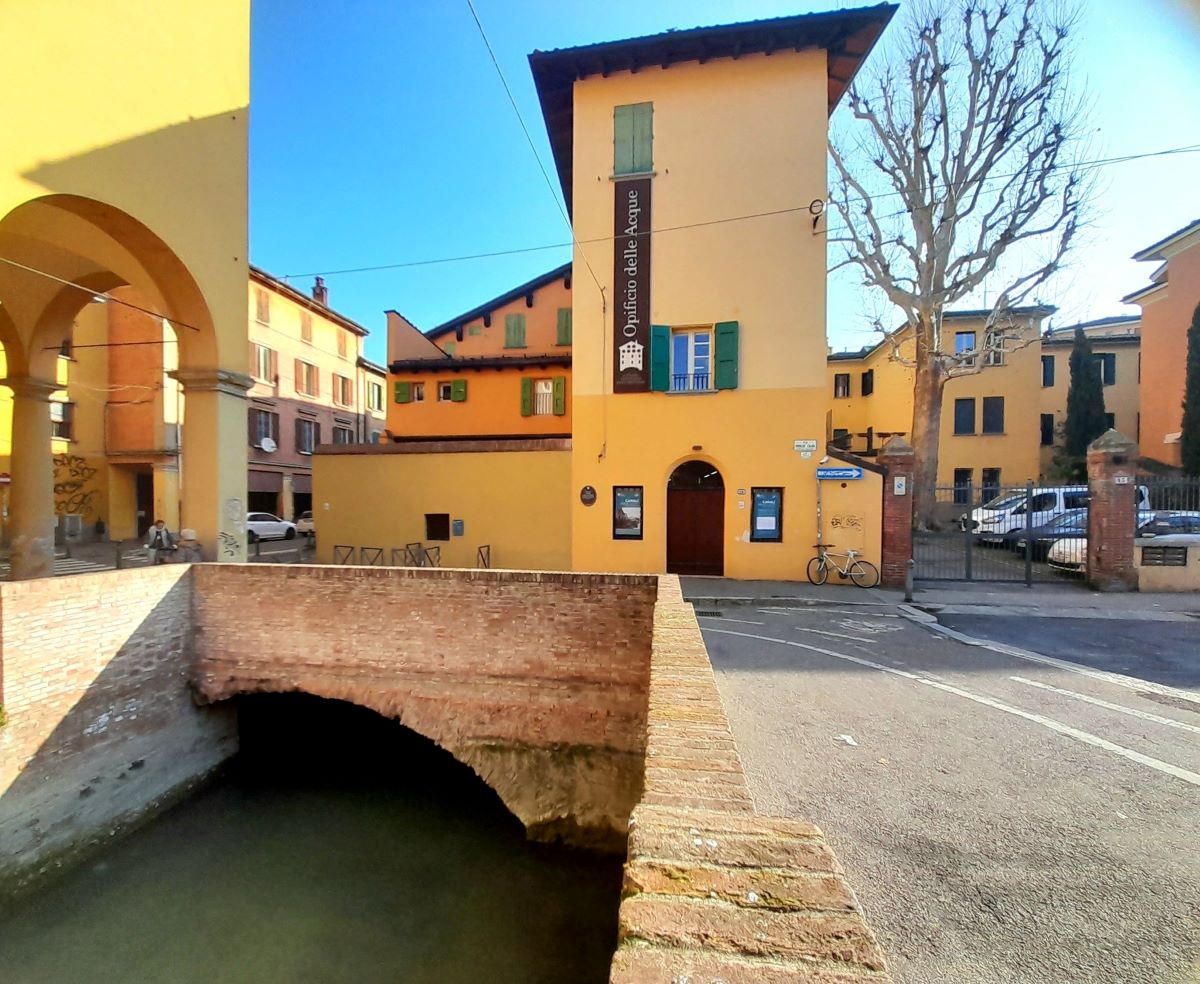
It is now common knowledge that Bologna is criss-crossed by a network of canals: just take a peek from the Finestrella on Via Piella (or, to avoid queues, from Via Malcontenti) and you will realise this.
But what these canals were used for, and why they flow mostly underground today, is another story altogether. The best way to find out more about it is to visit the Opificio delle Acque, a documentary centre and exhibition space focusing precisely on the link between the city and its canals, starting from the 12th century and continuing to the present day.
The building of the Opificio itself is connected to the waters of Bologna. Its original name is the Opificio della Grada, and it was built at the end of the 17th century to regulate the entrance of the Reno Canal into the city, whose waters were then used for the various production activities scattered throughout the city centre.
4. Collezioni Comunali d’Arte
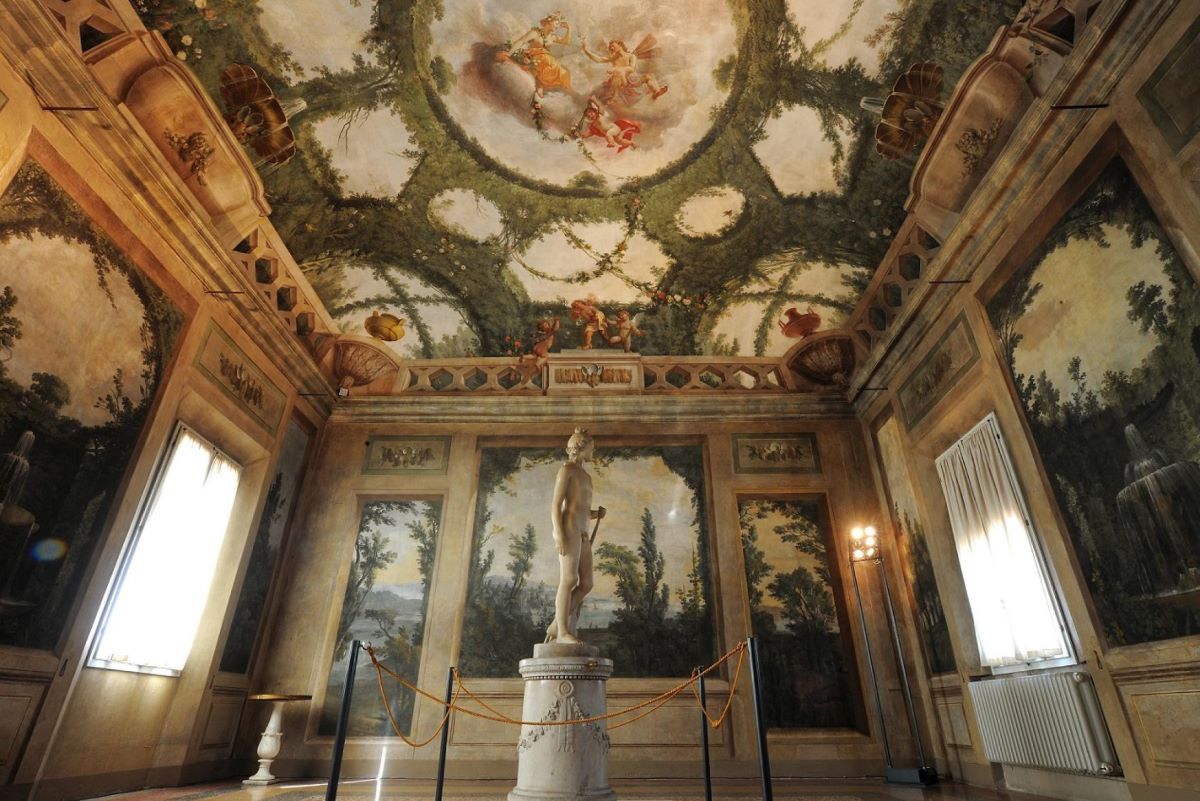
Incredible as it may seem, many traditional tourist itineraries do not include one of the most central and interesting places in the city. Visiting the Collezioni Comunali d’Arte is indeed as simple as to go to Piazza Maggiore and climb up to the second floor of Palazzo d’Accursio, Bologna’s City Hall.
Here, inside the former residence of the Bolognese Cardinal Legates, a composite world opens up with a wealth of interesting artworks, ranging from the Middle Ages to the last century. For instance, you can admire some paintings by Vitale da Bologna, an iconic 14th-century Bolognese painter, Donato Creti’s “Mercury Delivering the Golden Apple to Paris”, as well as “Ruth”, a masterpiece by Francesco Hayez. Not everyone knows that the Collezioni Comunali houses a work by Antonio Canova too. The white statue of Apollino, painted by the Venetian master in 1797, dominates the centre of the so-called Sala Boschereccia – with frescoes that create the illusion of a winter garden.
Before leaving the museum, do not forget to enter the impressive Sala Urbana, created in 1630, whose walls are literally covered with painted coats of arms (there are as many as 188 of them).
5. Cinema Modernissimo
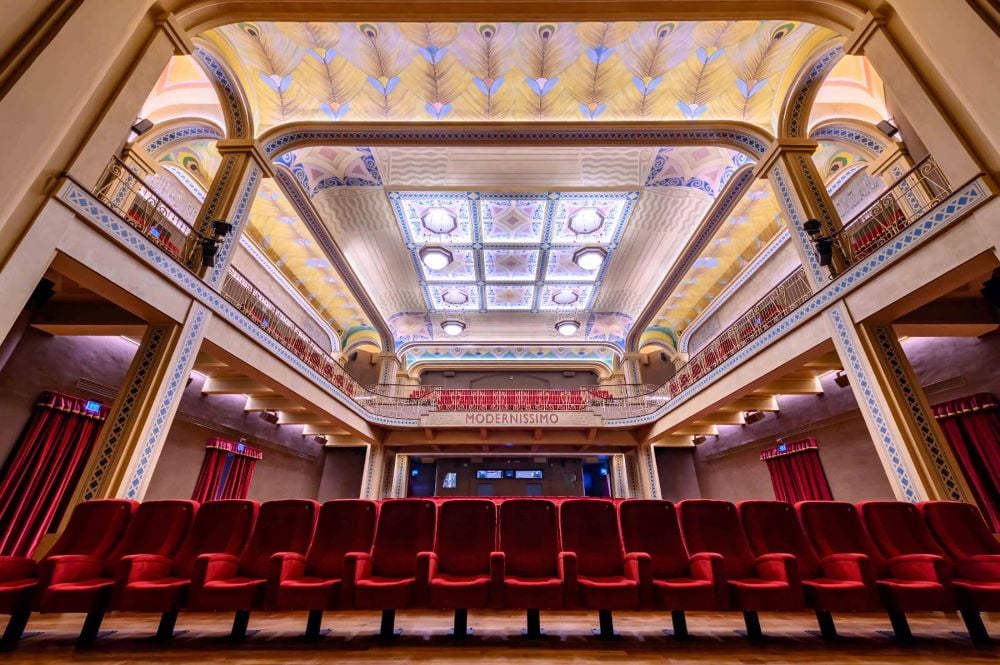
A few steps away from the Collezioni Comunali there’s a somewhat hidden place that holds some interesting surprises. If we say hidden, it’s because it’s set right under our feet: the Cinema Modernissimo is an underground cinema that reopened its doors to the city a few years ago. Founded back in 1915, it remained an institution until the early 2000s when it was eventually closed.
Today, entering the Modernissimo is like taking a time machine and going back to the Art Nouveau era: amidst geometric motifs, wrought-iron balustrades and red velvet seats, viewing each film is truly a unique experience.
However, if you are not in the mood for a film or are short of time you can always appreciate the retro atmosphere of the foyer, have a coffee at the bar or visit one of the temporary exhibitions housed in the adjacent rooms under Via Rizzoli.
6. Oratorio di Santa Cecilia
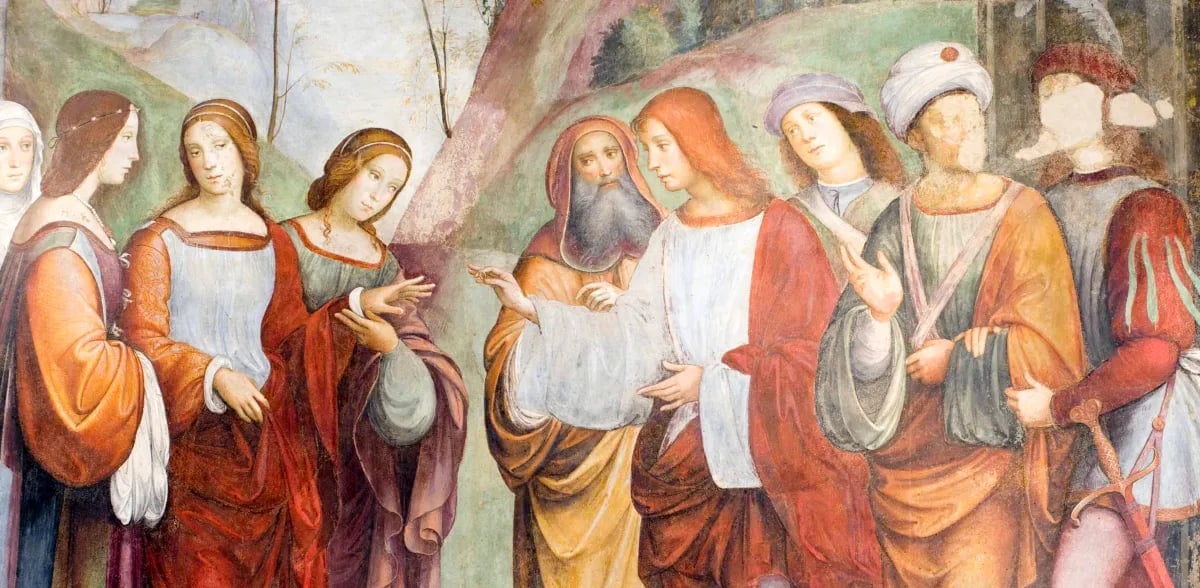
Let us now go down Via Zamboni to enter the university area, home to another hidden treasure of Bologna: the Oratory of Santa Cecilia. This intimate environment, far from outside noise, hides a major series of paintings for the artistic history of the city, so much so that some call it the most significant paintings of the Bolognese Renaissance or, in more grandiose tones, the “Sistine Chapel of Bologna”.
Protected by a lowered barrel vault, the frescoes unfold on the side walls of the oratory. A sequence of ten works, painted between 1505 and 1506, narrate episodes from the life of Saint Cecilia and her husband Valerian. The artists called upon to paint the frescoes – commissioned by Giovanni II di Bentivoglio, lord of Bologna – included Francesco Francia, Lorenzo Costa and Amico Aspertini, the most renowned artists of the Bentivoglio court at the time.
7. Giardino del Guasto
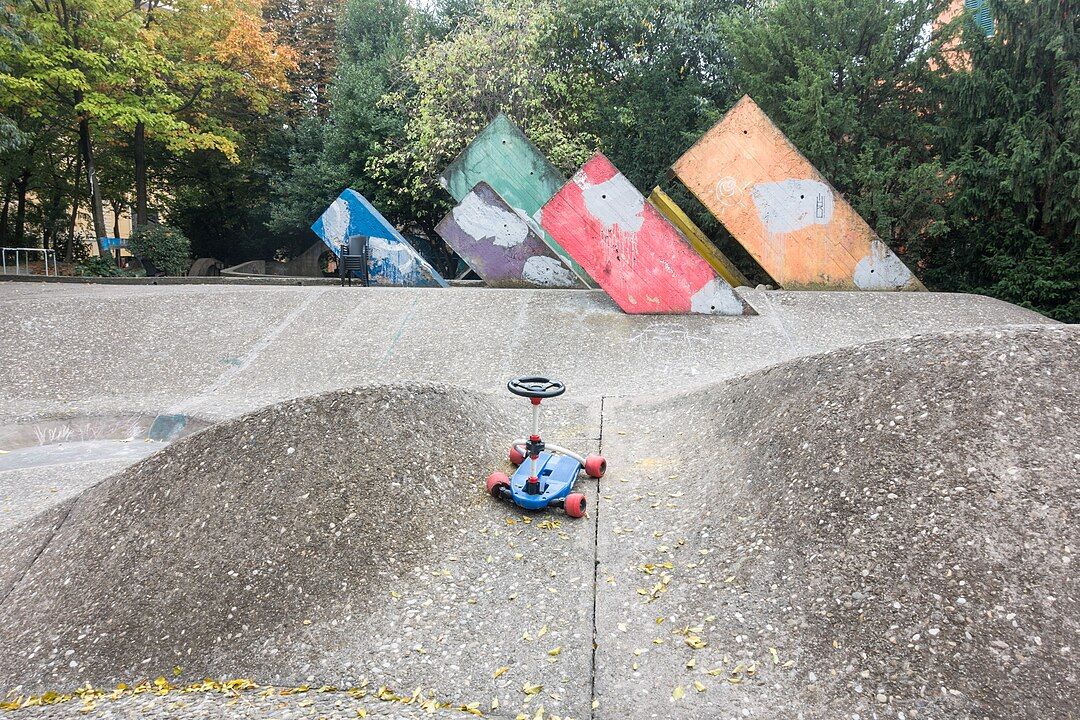
Not far from the Oratory there’s a small hill with a rather evocative name, which enlivens the city’s flat landscape. According to history, the Guasto (‘damaged’ or ‘rotten’ in English) was built in the early 16th century, when the people of Bologna revolted and destroyed the nearby Palazzo Bentivoglio. It was created from the accumulation of rubble, and was used in various ways over time, eventually becoming a public garden in 1974.
Gennaro Filippini’s project involved the creation of an experimental playground for children with Montessori-inspired shapes and materials. To this day, the play area dominates the hillside with concrete animals, colourful murals and a small fountain, and to reach it you have to go through a grove with various species of shrubs and trees. In fine weather the Giardino del Guasto also hosts meetings and events.
8. La Specola
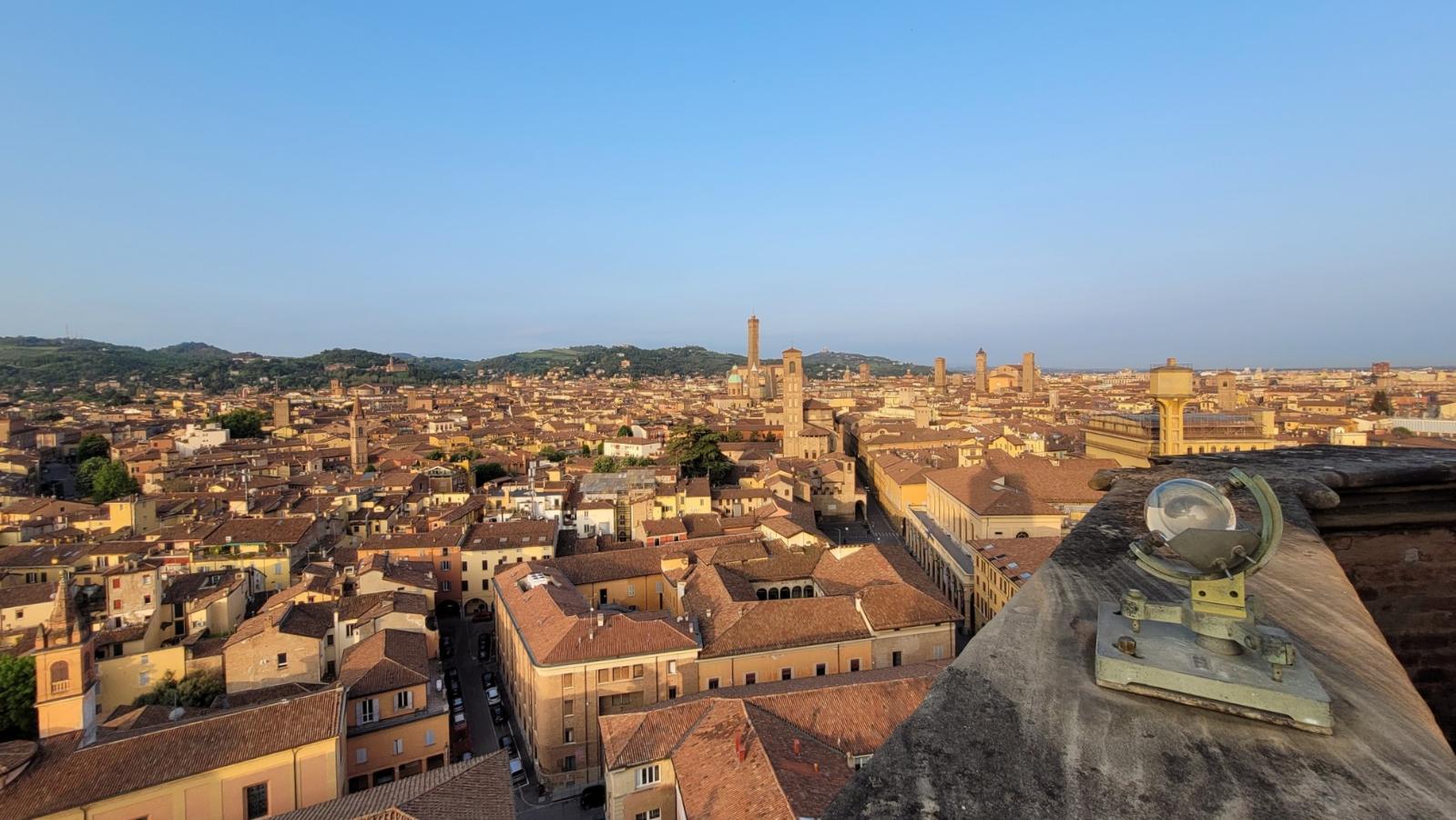
Observing Bologna from above is one of the most popular activities for tourists, and also one of the easiest to do in the city of medieval towers. While the Asinelli Tower is currently closed for maintenance work, there is no shortage of alternatives for those who want to admire Bologna’s skyline.
One of these is the Specola Tower, accessed via the museum of the same name housed in Palazzo Poggi. Once the city’s astronomical observatory, built between 1712 and 1726, the tower offers a beautiful view of the historic centre even though it is “only” 29 metres high, compared to the almost 100 of the Asinelli.
The climb to the top is interspersed with pleasant stops in the museum rooms, which house fascinating astronomical instruments from the past such as huge wooden telescopes, armillary spheres and topographic maps.
The museum is currently closed for construction; it is scheduled to open in 2025. We recommend visiting its website before travelling.
9. Orto Botanico
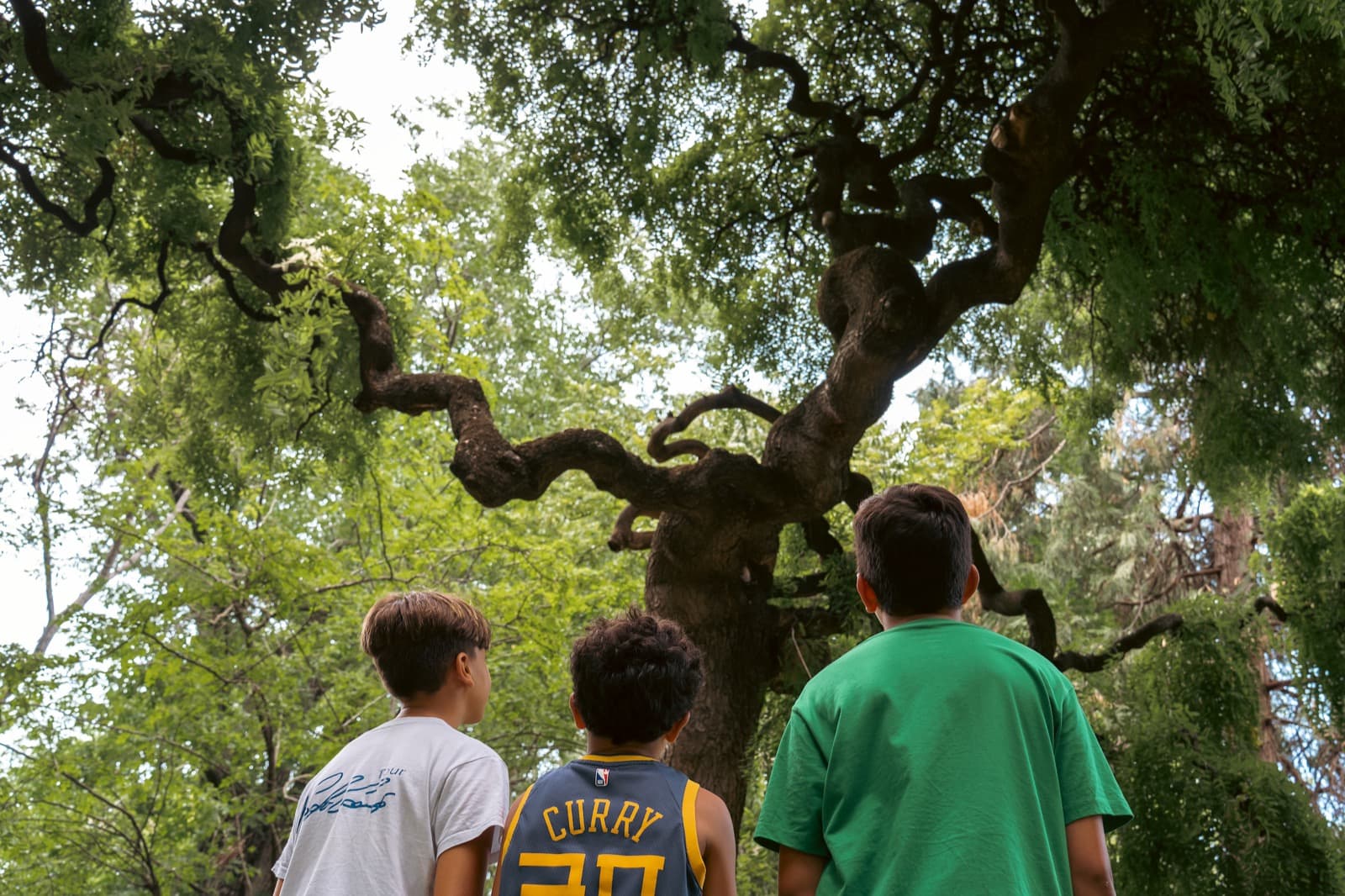
Although we are almost at the end of our tour, there is still time for a regenerating break in nature. Founded in 1568, the Botanical Garden is the perfect place for a peaceful stroll among plants and trees of various species that tell the story of the ancient bond between the city of Bologna and botanical culture.
Inside the garden, located just a few steps from Via Zamboni, you can visit the tropical greenhouses, admire the collection of insectivorous and succulent plants, wander through the woods and observe the flowers sprouting among the gardens and ponds. But this is also a place steeped in history. It is no coincidence that it’s the fourth oldest botanical garden in Italy after those in Pisa, Padua and Florence. This is why the ancient herbaria of Bolognese scholars are also on display, such as the one belonging to the founder of the Botanical Garden Ulisse Aldrovandi.
10. Street art in the city centre
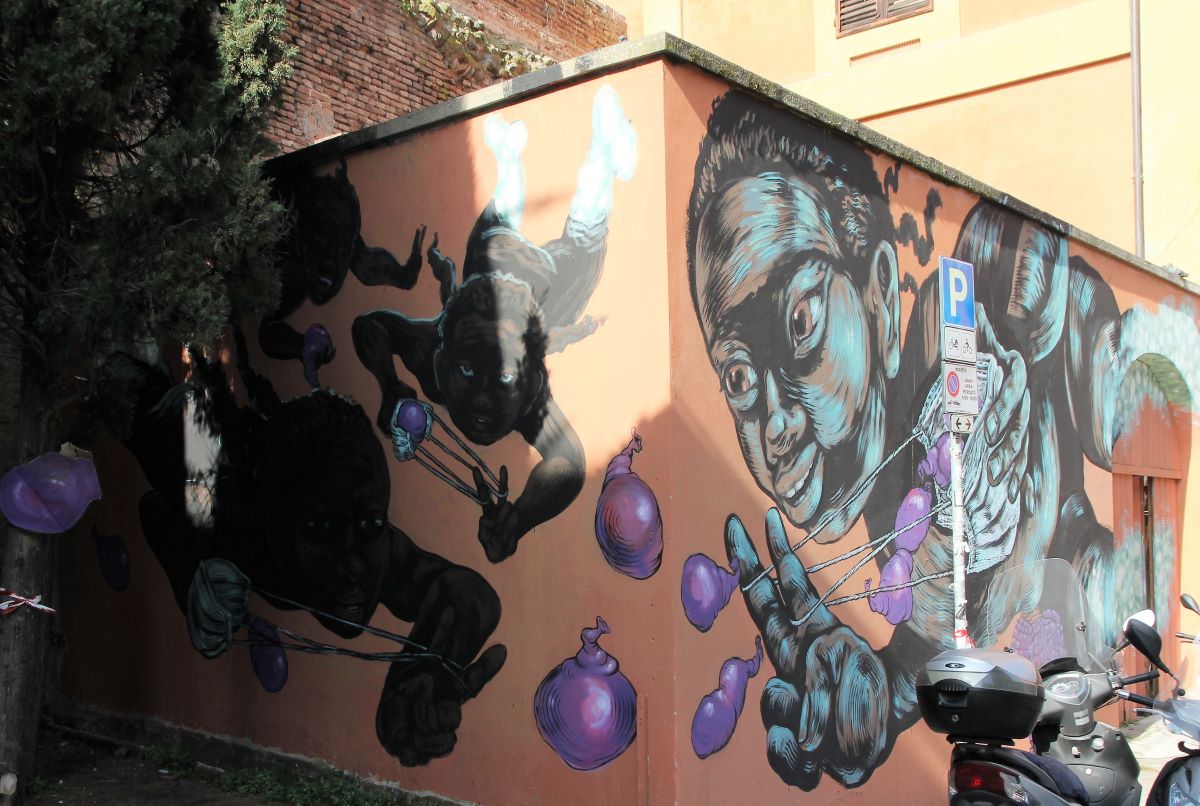
You cannot say you have really known Bologna without having walked its streets in search of murals. The city’s relationship with street art is deep-rooted and long-lasting, and examples of it can be found practically everywhere.
There are so many works that it would be impossible to mention them all (you’ll find a complete list on this map though, including both the centre and the suburbs). We shall therefore highlight just a few, starting from the University area. A forge of street art, one of Bologna’s first murals appeared here, created in 1988 by Luis Gutierrez at number 38.
Another particularly interesting area is Via Petroni, also known for its nightlife. In this cobbled street full of clubs you will notice examples of street art at every turn: on the walls, of course, but also on shop shutters. The most impressive works, however, are to be found at the end of the street, namely Ericailcane’s mice and Bastardilla’s female figures.
Then don’t forget to pop over to Piazza Azzarita to see Levalet’s collage, and finally to Largo Caduti del Lavoro for the murals by Lokiss and Rae Martini. You’ll then find yourself back near MAMbo where our tour began, and from there you can quickly return to the train station.
Cover photo by Aneta Malinowska ART via Wikimedia Commons
Author

Maria Grazia Masotti
An eternal dreamer, but I try to stay grounded. I was raised in the countryside but I love big cities. I’m always ready for a trip, as long as it’s sustainable.
You may also like
Modena on foot, what to see in a 10-stage tour
by Maria Grazia Masotti /// June 3, 2025
Ravenna on foot, what to see in a 10-stage tour
by Davide Marino /// February 13, 2025
Rimini on foot, what to see in a 10-stage tour
by Maria Grazia Masotti /// February 21, 2025

Interested in our newsletter?
Every first of the month, an email (in Italian) with selected contents and upcoming events.
Parma on foot, what to see in a 10-stage tour
by Maria Grazia Masotti /// March 5, 2025
Ferrara on foot, what to see in a 10-stage tour
by Elisa Mazzini /// October 17, 2024
